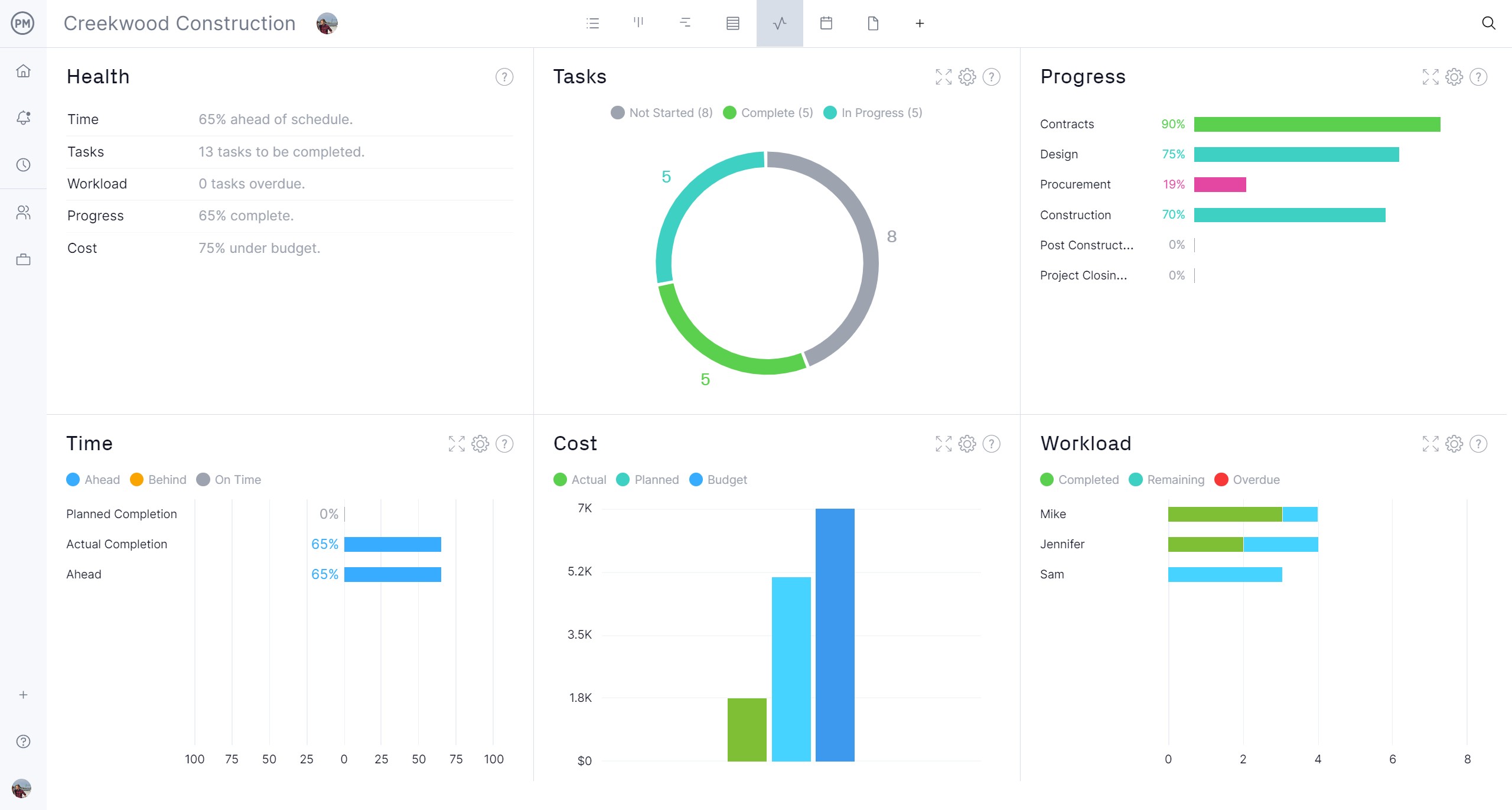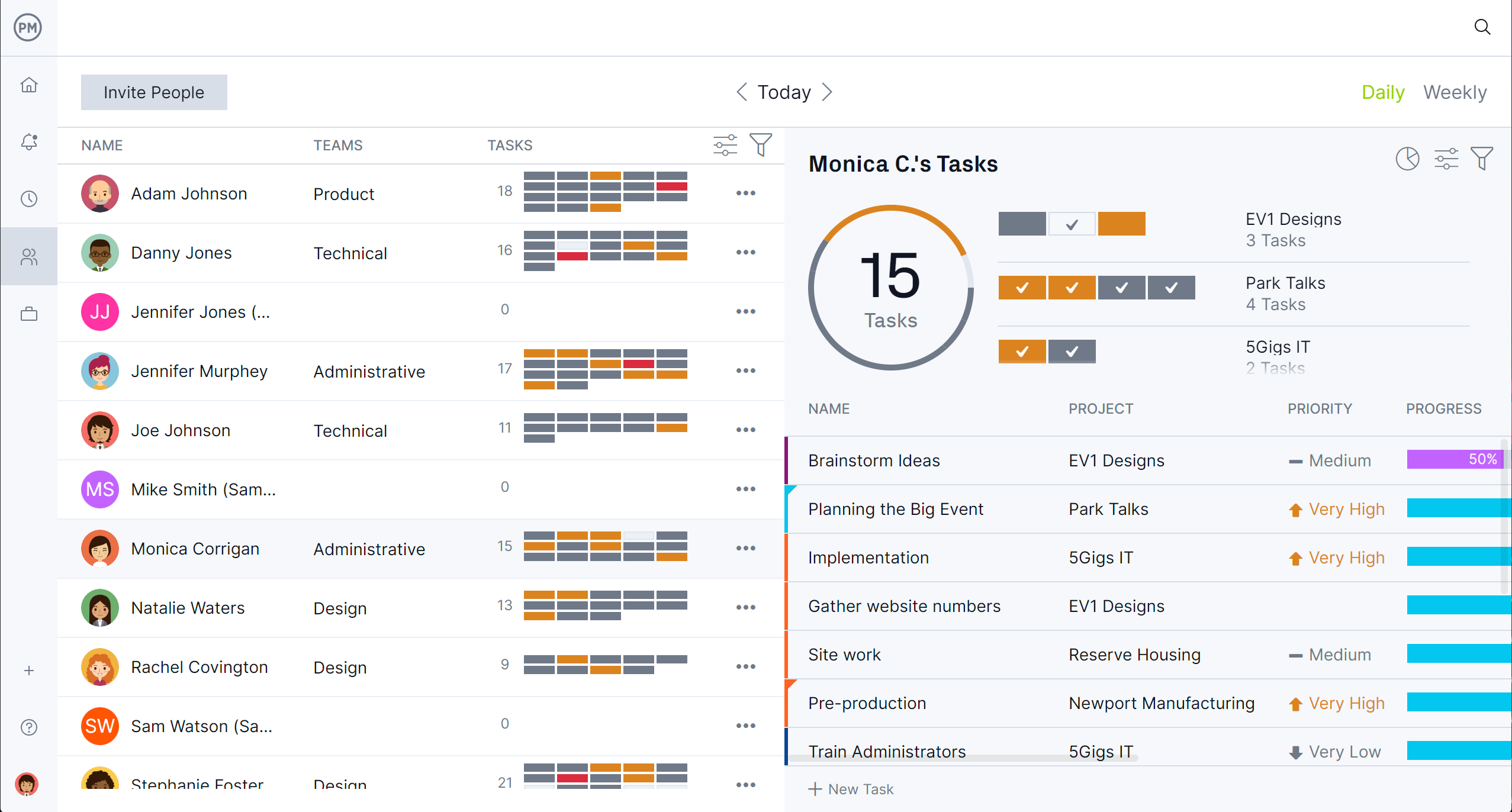Maintenance is an essential part of industries from construction to manufacturing. It keeps equipment in optimal working condition, which leads to more efficiency and quality and keeps work on time and within budget. A maintenance schedule ensures those tasks are done regularly.
Learn how to create a maintenance schedule and download a free maintenance schedule template to get started. Read about the benefits of an effective maintenance schedule and see how a maintenance plan can help a diverse group of industries.
What Is Maintenance Scheduling?
Maintenance scheduling is the process by which maintenance departments plan, organize and coordinate the activities involved in equipment maintenance to ensure that everything is working properly.
What Is a Maintenance Schedule?
A maintenance schedule is a detailed plan that includes the timing and frequency of maintenance activities for equipment, machinery and facilities within an organization. The purpose is to make sure that these assets are in optimal working condition, reducing downtime and extending the life of the equipment. It includes asset inventory, maintenance activities, frequency, responsible personnel, documentation and identification of resources needed to perform maintenance tasks.
Having a well-structured maintenance schedule reduces unscheduled downtime through proactively planning and allocating resources for maintenance tasks.
Implementing a maintenance schedule will solve problems before they can risk breaking down machinery and stopping production, which leads to delays and added costs. Not only that but having a maintenance schedule can extend the lifetime of equipment and increase the operational efficiency of that equipment.
Project management software can help organizations keep to their maintenance schedule. ProjectManager is award-winning project and portfolio management software with multiple project views that help keep maintenance schedules on track. Gantt charts can schedule maintenance tasks, allocate resources and track costs. Set up recurring tasks for maintenance activities. Email and in-app notifications make sure that they don’t slip through the cracks. Get started with ProjectManager today for free.
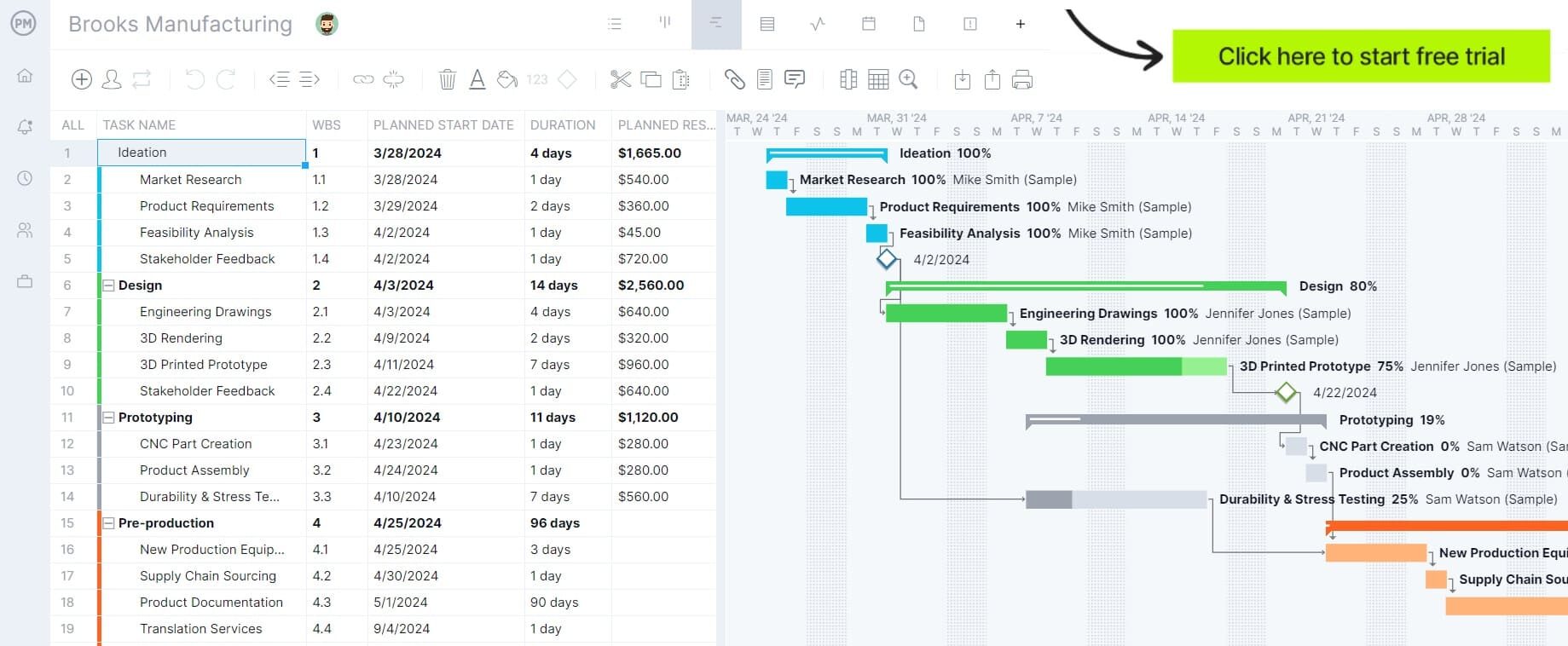
Types of Maintenance Schedules
There are many different types of maintenance schedules. Each serves a different purpose based on the organization’s needs, equipment and operational goals. The following are a handful of the more common types of maintenance schedules.
Preventive Maintenance Schedule
This involves regularly scheduled maintenance activities to proactively prevent equipment failures, such as conducting routine inspections, lubrication, filter changes and part replacements based on time intervals, whether monthly or quarterly.
Corrective Maintenance Schedule
When maintenance is performed after a failure has occurred it’s called corrective and seeks to restore equipment to operating condition. For example, repairing or replacing broken components after an equipment malfunction.
Predictive Maintenance Schedule
The condition of the equipment rather than a fixed schedule defines the activities in predictive maintenance. Monitoring tools and techniques are used to predict when maintenance should occur, such as vibration analysis, thermography and oil analysis.
Condition-Based Maintenance Schedule
Similar to predictive maintenance, this focuses on real-time data and condition monitoring to determine when maintenance should be performed. For example, monitoring temperature, pressure and wear levels should only trigger maintenance actions when specific thresholds are reached.
Time-Based Maintenance Schedule
This is a maintenance strategy that involves performing maintenance activities at regular, predetermined intervals, regardless of the actual condition of the equipment. This is designed to prevent equipment failures and ensure optimal performance by regularly servicing machinery and systems based on a set timeline.
How to Make a Maintenance Schedule
Maintenance scheduling starts with a maintenance schedule. To create an effective maintenance schedule and ensure that equipment is always reviewed, maintained and replaced as needed, follow these four steps.
1. List All the Equipment to Maintain
To have a maintenance schedule, first, the equipment must be inventoried. This involves thoroughly inspecting the equipment and a comprehensive list of everything so nothing is neglected. Be sure that the equipment list is complete. Don’t leave anything out that requires regular maintenance. This will help to make maintenance scheduling more effective.
2. Identify Maintenance Activities
Once the equipment list has been made and the essential machinery is included, the next step is understanding the necessary activities for the maintenance schedule. Every piece of equipment has different requirements. Research those and add them to the equipment list after each piece of machinery. This includes prioritizing which equipment has the greatest return on investment or is most frequently used and the repair or replacement costs. A checklist of these maintenance activities streamlines maintenance scheduling.
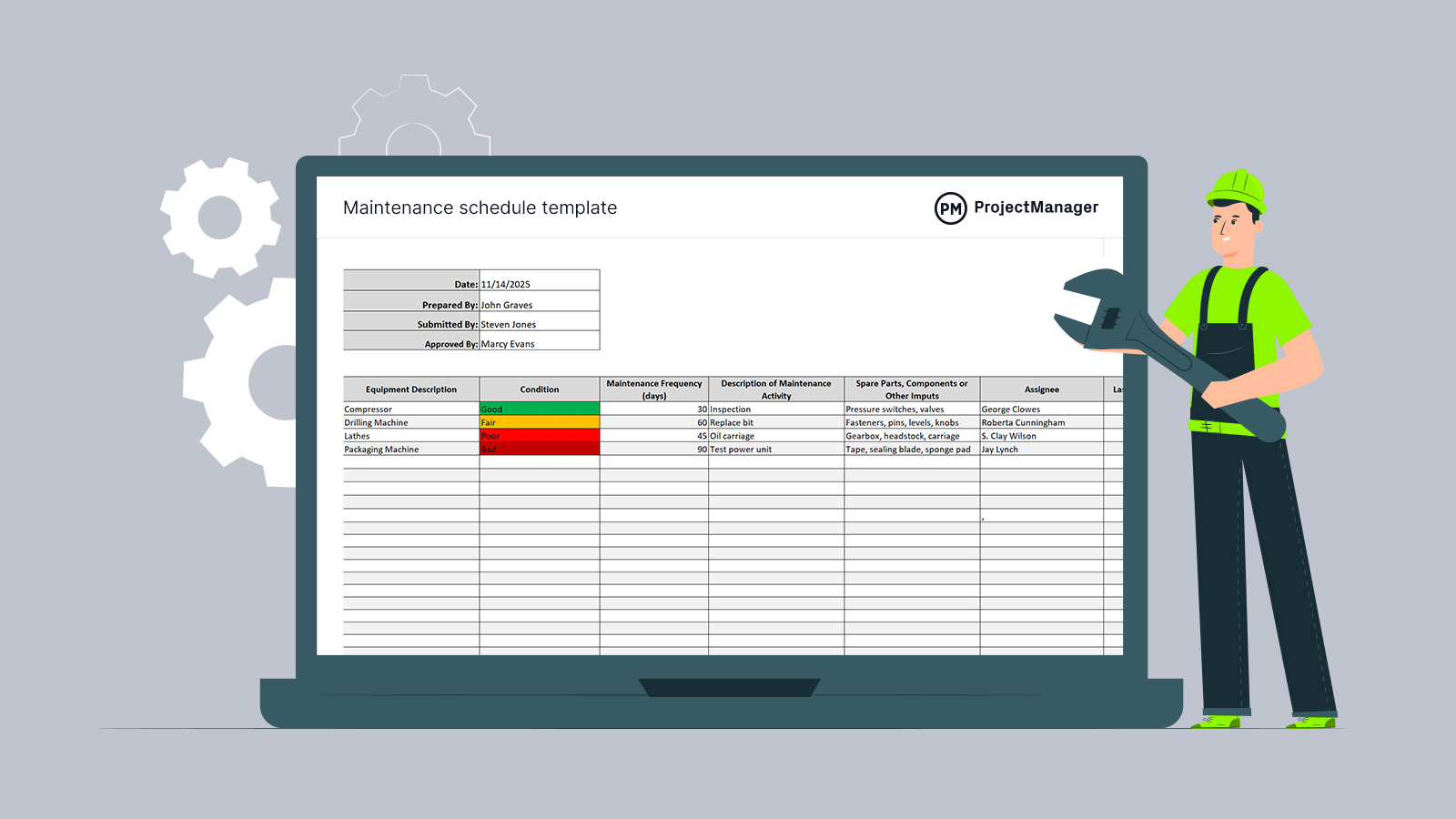
Get your free
Maintenance Schedule Template Excel
Use this free Maintenance Schedule Template Excel for Excel to manage your projects better.
3. Determine the Frequency of Maintenance
Schedule inspections and maintenance based on the frequency required for each piece of equipment. There are likely activities that must be performed daily, while others can wait a week or month or can be done whenever required through a work order. These can include inspections, repairs and other maintenance tasks. Be sure to define the maintenance frequency for each item on the equipment list.
4. Define Maintenance Dates
Finally, to execute the maintenance schedule, the above information must be scheduled. This includes calendaring the maintenance schedule to ensure that every piece of equipment gets the maintenance it requires with the frequency to ensure it continues to work as expected. This maintenance schedule should be tracked and adjusted as needed.
Maintenance Scheduling Example
Let’s look at a manufacturing facility for an example of maintenance scheduling. The maintenance work can be split into four main categories: HVAC system, electrical system, plumbing system and roofing system.
First, all the equipment is listed, then the activities are identified and the frequency and dates for the scheduled maintenance are determined. The maintenance department has already done this, as shown in the image below. To better understand the process, we’ll focus on the HVAC and electrical work.
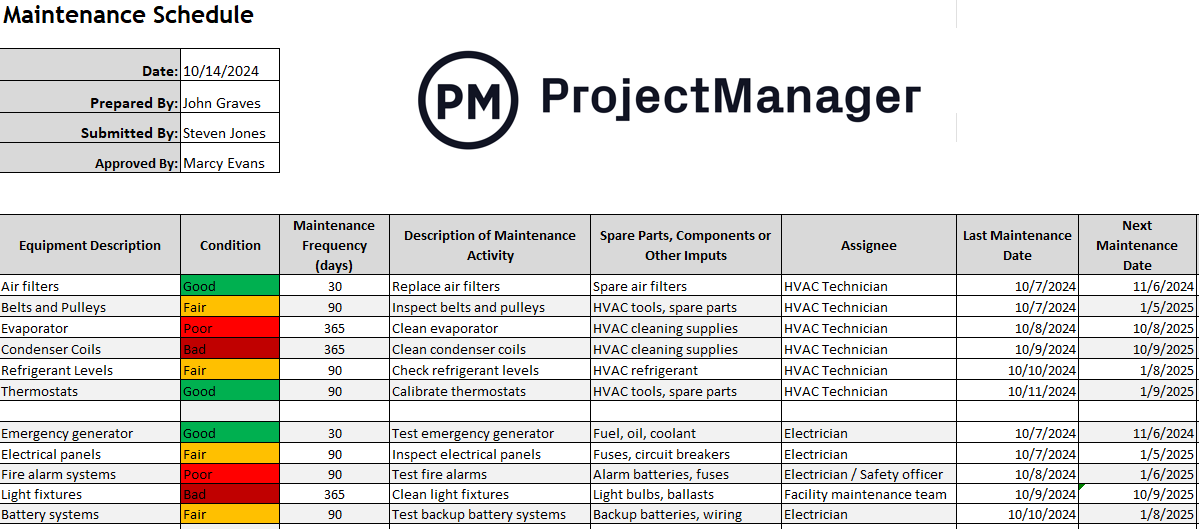
Maintaining these systems is a crucial part of the production process as it ensures optimal conditions for employees and keeps raw materials and work-in-progress in optimal conditions throughout the factory floor as products are assembled. If the HVAC or electrical system breaks down, deadlines won’t be met and customer satisfaction will be jeopardized.
Therefore, the maintenance team has determined the frequency of maintenance activities to ensure these systems remain operational. The scheduled maintenance has been incorporated into the larger production schedule to make it as least disruptive as possible.
Maintenance Schedule Template
While project management software is superior to managing maintenance scheduling on Excel spreadsheets, some need to try other methods before realizing this fact. Therefore, this free maintenance schedule template for Excel can provide a hands-on tool to create a maintenance schedule and discover the pros and cons of using spreadsheets for maintenance scheduling.
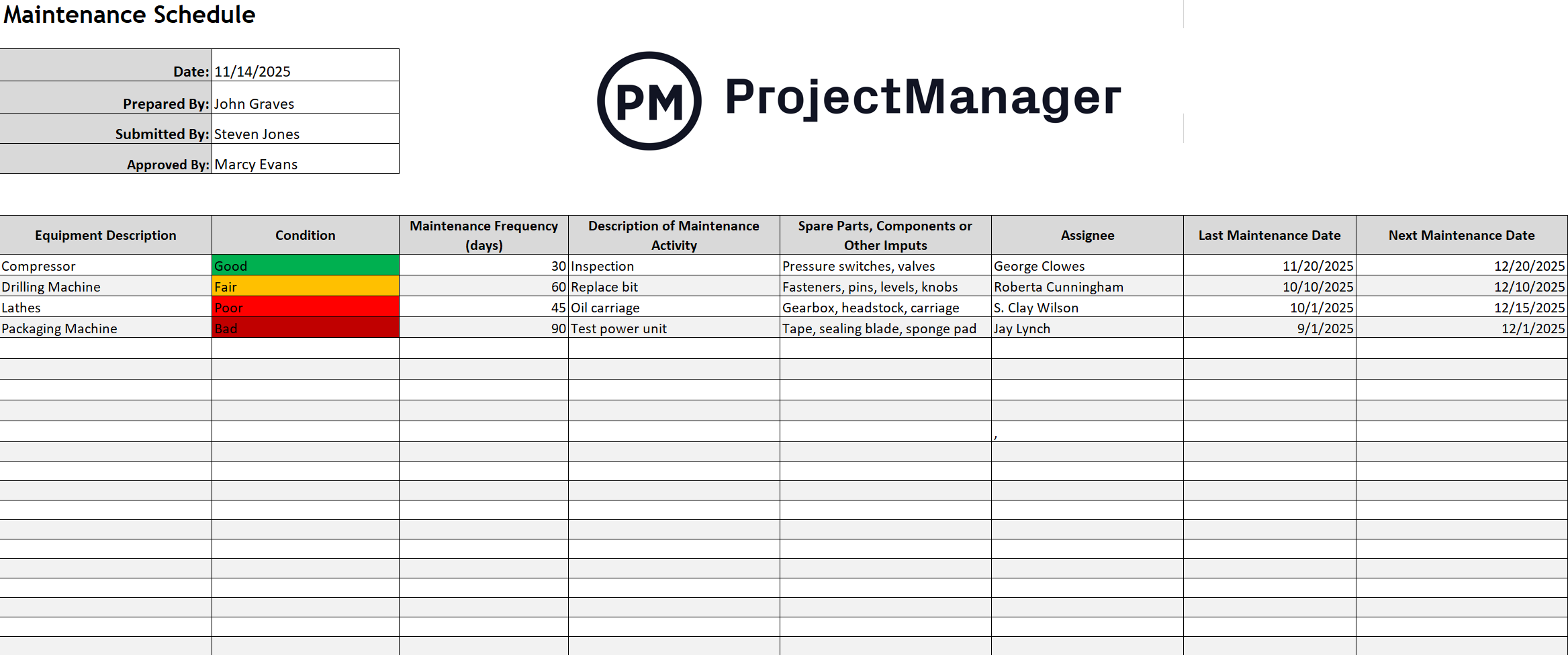
This free maintenance schedule for Excel has everything necessary for maintenance scheduling. There’s a column to list equipment, another has a pull-down menu to identify its condition and then a column to note the frequency of the maintenance in days. The maintenance schedule template is fully customizable and can be easily edited to add or subtract columns to match any maintenance plan.
Benefits of Effective Maintenance Scheduling
Effective maintenance scheduling helps companies focus on the future and, by doing so, potential issues that can disrupt work are resolved before they become a problem. The short intervals of work stoppage are worth the benefits of maintenance scheduling.
Some of those benefits include higher productivity as the equipment is always working optimally and not breaking down unexpectedly. This also leads to increased operational efficiency, allowing work to move more smoothly.
Other benefits include a decrease in spare parts. There’s no reason to overstock spare parts with regular maintenance scheduling because those parts are replaced before they break down. This also improves overall workflow, keeping teams working rather than waiting for equipment to get repaired.
Regular maintenance scheduling means fewer injuries and less downtime, less resource movement and fewer and lower production costs. All this combines into a more efficient production process, keeping equipment online and getting the most out of teams, which can work at capacity.
What Industries Can Benefit From Maintenance Planning?
Maintenance is often thought of as a fancy term for what a janitor does. Cleaning halls and bathrooms are maintenance and important. However, the field is much larger than a person pushing a mop and bucket. In fact, maintenance is a huge business that can be found across many industries.
Whether a company has an in-house maintenance department or outsources the work, one can find maintenance planning in industries such as education, mining and energy to facilities, healthcare and warehousing and distribution. Below are two industries that benefit from maintenance planning, which we’ll explain in greater detail.
Construction
Construction works with heavy equipment, such as cranes, excavators, graders and bulldozers. This is not only large, but expensive equipment and, therefore, keeping these machines running is a priority. Maintenance planning minimizes equipment downtime and keeps the construction site activities running.
There are also safety issues on a construction site that require a kind of maintenance through protection inspection. This maximizes the safety of the construction assets. Keeping well-maintenance and monitoring the site and equipment regularly means fewer breakdowns, emergencies and risks of accidents.
Manufacturing
Manufacturing applies complex and large assets. This equipment is running sometimes continuously for long periods, which impacts performance. Maintenance planning avoids costly equipment failure that shuts down production. It also keeps machines working longer, as replacement is expensive.
Scheduling maintenance keeps everyone alert to upcoming maintenance, which can then be baked into the schedule for the least disruption. Preventive maintenance is also key, as it prevents sudden device failures that are so costly. Having a maintenance plan and schedule means decreased asset downtime, which leads to greater productivity and profits for manufacturers.
How ProjectManager Helps With Maintenance Scheduling
Being able to create a maintenance schedule and manage those activities to ensure that they are done when needed, requires more than a static template. The free template above can help, but it must be manually updated, isn’t collaborative and doesn’t remind the maintenance team when work has to be done. However, project management software, such as ProjectManager can.
The multiple project views mean managers can create maintenance schedules on Gantt charts by managers while maintenance teams use kanban boards or task lists to complete their activities. All these views are connected so if a change occurs on one, all are updated together.
Track Costs and Resource Utilization
Maintenance costs money and those costs have been earmarked in a larger budget. To ensure that the maintenance schedule isn’t going over that budget, use real-time dashboards to monitor costs, time and more. The dashboard or portfolio dashboard can automatically collect live data and display it in easy-to-read graphs and charts. Use customizable reporting features for more details on variance, timesheets and workload.

Balance the Team’s Workload
Managing limited resources to achieve all the goals of a maintenance schedule is critical to successful maintenance planning. When onboarding the maintenance team, set their availability, such as PTO, vacation and global holidays. This makes it easier to assign them to tasks. Go to the team page or the workload chart to get an overview of the resource allocation of the team. If some are underallocated while others are overallocated, balance their workload right from the chart and keep them working at capacity.

Related Maintenance Scheduling Content
Maintenance is a large field and it touches many industries. This article focuses on maintenance scheduling, but there is much more to read across the site. ProjectManager is more than award-winning software, it’s an online hub for everything related to project management, with weekly blogs, video tutorials, eBooks, guides and free templates. Here are a few related examples.
- Total Productive Maintenance Essentials: 8 Things You Need to Know About TPM
- Manufacturing Operations Management Explained
- Equipment Inventory: A Quick Guide
ProjectManager is online project and portfolio management software that connects teams whether they’re in the office, out on the job site or anywhere else. They can share files, comment at the task level and stay updated with email and in-app notifications. Join teams at Avis, Nestle and Siemens who are using our software to deliver successful projects. Get started with ProjectManager today for free.

